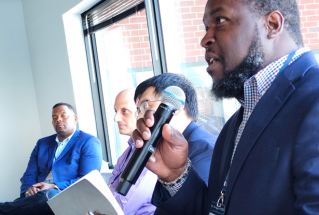Collaboration Crossroads: Bayh Dole Act, March-In Rights, and Impact on Partnerships
Jan. 16, 2024 —In the United States, the Bayh-Dole Act of 1980 was a turning point for the research and commercialization landscape—allowing universities to protect and commercialize discoveries resulting from federally funded research at their institutions. Supported by strong data showing an explosion of academic licenses and funding since its passage, Bayh-Dole has been lauded as the legislation that catalyzed a half-century of innovation and commercialization. Its success has led many other countries to adopt or consider adopting similar legislation.[1]
—In the United States, the Bayh-Dole Act of 1980 was a turning point for the research and commercialization landscape—allowing universities to protect and commercialize discoveries resulting from federally funded research at their institutions. Supported by strong data showing an explosion of academic licenses and funding since its passage, Bayh-Dole has been lauded as the legislation that catalyzed a half-century of innovation and commercialization. Its success has led many other countries to adopt or consider adopting similar legislation.[1]
Potential changes to the academic technology transfer landscape and their industry partners
Last month, the White House announced a proposed framework for federal agencies to more easily exercise march-in rights, which allow the U.S. government to license an invention to a third party for effective commercialization if the invention was taxpayer-funded. March-in rights were enshrined in Bayh-Dole, but have never been exercised. The framework is in its comment period until Feb. 6, 2024, and the research community is encouraged to offer perspective on the guidance that, if finalized, will have lasting implications for innovation and discovery everywhere.
The Bayh-Dole era
Enabling universities to retain the rights to their inventions, Bayh-Dole incentivizes research and commercialization, increasing patents, startups, and other economic development activities. Technology transfer, the process of commercializing new inventions, is a driving economic force in the United States, contributing nearly $2 trillion to the U.S. gross industrial output and supporting 6.5 million jobs. Allowing universities to retain intellectual property from federally funded research incentivizes academic commercialization activities, opening the door for more partnerships to develop, license, and bring research findings to market. Bayh-Dole also gives industry confidence that inventions resulting from sponsored research with academia can be licensed and commercialized.
Proposed pivot
Key to the Bayh-Dole Act is a set of rules known as march-in rights, which enable the government to license rights to an invention if certain criteria aren’t met by the creator. March-in rights were established primarily as a safety net to ensure that discoveries enabled through government funding are publicly available and accessible. Safeguards were built in to strike a balance; march-in rights were envisioned to be rarely, if ever, exercised so industry and universities can innovate freely, confident of ROI for their efforts.
Recently, new questions have arisen about the appropriateness of exercising march-in rights, particularly regarding health care therapeutics and treatments with a high price tag. The U.S. National Institute of Standards and Technology (NIST) was given responsibility to propose regulations. NIST published a notice of proposed changes in 2021, including a provision that march-in “shall not be exercised exclusively based on the business decisions of the contractor regarding the pricing of commercial goods and services arising from the practical application of the invention.” When more than 81,000 public comments were received, NIST was directed by the Biden administration to reconsider the rule.
Last month, new proposed guidance was released, allowing price to be a factor agencies may weigh in exercising march-in rights.
The proposed change in interpretation of Bayh-Dole has far-reaching implications. In the innovation sphere, some have raised concerns that adopting this framework could have a chilling effect because of the risk that company partners could lose exclusive rights to license research results they poured millions into developing. This would discourage businesses from working with academic researchers or licensing university technology—and decrease innovation overall in the United States. In a recent editorial in Fortune, UIDP member representative Almesha Campbell posits that the reinterpretation of march-in rights could negatively impact entrepreneurs from all backgrounds, including those at HBCUs. “Entrepreneurs of color, at HBCUs and elsewhere, are finally getting a chance to show how innovative and entrepreneurial they are,” Campbell writes. “Making this already difficult process even harder, by threatening to take away entrepreneurs’ intellectual property rights, would ensure they never even get a chance.”
Why it matters
The draft guidance comment period ending on Feb. 6, 2024, is an opportunity for the research community to voice concerns and lend expertise so the framework helps preserve the innovation culture that Bayh-Dole has allowed to flourish for over 40 years. Public investment in research can be traced to myriad technologies and products. The proposed guidance should strike a balance so march-in rights remain a tool of last resort. Industry sponsored research and university technology transfer encourage innovation and entrepreneurship, support economic development and job creation, and advance U.S. global research competitiveness. Bayh-Dole has ensured that universities have the right to commercialize their discoveries for over four decades.
We want to hear from you. What do you think about the proposed framework for exercising march-in rights? Let us know on our LinkedIn profile.
The 3-Minute Read is a UIDP member information piece and does not represent the opinions of our members or representatives. We welcome your comments on our LinkedIn profile.
[1] Thorsten Gores and Albert N. Link (2021), “The Globalization of the Bayh–Dole Act”, Annals of Science and Technology Policy: Vol. 5: No. 1, pp 1-90. http://dx.doi.org/10.1561/110.00000018



Collaboration Crossroads: Bayh Dole Act, March-In Rights, and Impact on Partnerships
Jan. 16, 2024 —In the United States, the Bayh-Dole Act of 1980 was a turning point for the research and commercialization landscape—allowing universities to protect and commercialize discoveries resulting from federally funded research at their institutions. Supported by strong data showing an explosion of academic licenses and funding since its passage, Bayh-Dole has been lauded as the legislation that catalyzed a half-century of innovation and commercialization. Its success has led many other countries to adopt or consider adopting similar legislation.[1]
—In the United States, the Bayh-Dole Act of 1980 was a turning point for the research and commercialization landscape—allowing universities to protect and commercialize discoveries resulting from federally funded research at their institutions. Supported by strong data showing an explosion of academic licenses and funding since its passage, Bayh-Dole has been lauded as the legislation that catalyzed a half-century of innovation and commercialization. Its success has led many other countries to adopt or consider adopting similar legislation.[1]
Potential changes to the academic technology transfer landscape and their industry partners
Last month, the White House announced a proposed framework for federal agencies to more easily exercise march-in rights, which allow the U.S. government to license an invention to a third party for effective commercialization if the invention was taxpayer-funded. March-in rights were enshrined in Bayh-Dole, but have never been exercised. The framework is in its comment period until Feb. 6, 2024, and the research community is encouraged to offer perspective on the guidance that, if finalized, will have lasting implications for innovation and discovery everywhere.
The Bayh-Dole era
Enabling universities to retain the rights to their inventions, Bayh-Dole incentivizes research and commercialization, increasing patents, startups, and other economic development activities. Technology transfer, the process of commercializing new inventions, is a driving economic force in the United States, contributing nearly $2 trillion to the U.S. gross industrial output and supporting 6.5 million jobs. Allowing universities to retain intellectual property from federally funded research incentivizes academic commercialization activities, opening the door for more partnerships to develop, license, and bring research findings to market. Bayh-Dole also gives industry confidence that inventions resulting from sponsored research with academia can be licensed and commercialized.
Proposed pivot
Key to the Bayh-Dole Act is a set of rules known as march-in rights, which enable the government to license rights to an invention if certain criteria aren’t met by the creator. March-in rights were established primarily as a safety net to ensure that discoveries enabled through government funding are publicly available and accessible. Safeguards were built in to strike a balance; march-in rights were envisioned to be rarely, if ever, exercised so industry and universities can innovate freely, confident of ROI for their efforts.
Recently, new questions have arisen about the appropriateness of exercising march-in rights, particularly regarding health care therapeutics and treatments with a high price tag. The U.S. National Institute of Standards and Technology (NIST) was given responsibility to propose regulations. NIST published a notice of proposed changes in 2021, including a provision that march-in “shall not be exercised exclusively based on the business decisions of the contractor regarding the pricing of commercial goods and services arising from the practical application of the invention.” When more than 81,000 public comments were received, NIST was directed by the Biden administration to reconsider the rule.
Last month, new proposed guidance was released, allowing price to be a factor agencies may weigh in exercising march-in rights.
The proposed change in interpretation of Bayh-Dole has far-reaching implications. In the innovation sphere, some have raised concerns that adopting this framework could have a chilling effect because of the risk that company partners could lose exclusive rights to license research results they poured millions into developing. This would discourage businesses from working with academic researchers or licensing university technology—and decrease innovation overall in the United States. In a recent editorial in Fortune, UIDP member representative Almesha Campbell posits that the reinterpretation of march-in rights could negatively impact entrepreneurs from all backgrounds, including those at HBCUs. “Entrepreneurs of color, at HBCUs and elsewhere, are finally getting a chance to show how innovative and entrepreneurial they are,” Campbell writes. “Making this already difficult process even harder, by threatening to take away entrepreneurs’ intellectual property rights, would ensure they never even get a chance.”
Why it matters
The draft guidance comment period ending on Feb. 6, 2024, is an opportunity for the research community to voice concerns and lend expertise so the framework helps preserve the innovation culture that Bayh-Dole has allowed to flourish for over 40 years. Public investment in research can be traced to myriad technologies and products. The proposed guidance should strike a balance so march-in rights remain a tool of last resort. Industry sponsored research and university technology transfer encourage innovation and entrepreneurship, support economic development and job creation, and advance U.S. global research competitiveness. Bayh-Dole has ensured that universities have the right to commercialize their discoveries for over four decades.
We want to hear from you. What do you think about the proposed framework for exercising march-in rights? Let us know on our LinkedIn profile.
The 3-Minute Read is a UIDP member information piece and does not represent the opinions of our members or representatives. We welcome your comments on our LinkedIn profile.
[1] Thorsten Gores and Albert N. Link (2021), “The Globalization of the Bayh–Dole Act”, Annals of Science and Technology Policy: Vol. 5: No. 1, pp 1-90. http://dx.doi.org/10.1561/110.00000018